A Silent Invasion: 11 Invasive Species That Threaten Native American Wildlife
Experts have heightened their warnings this summer.
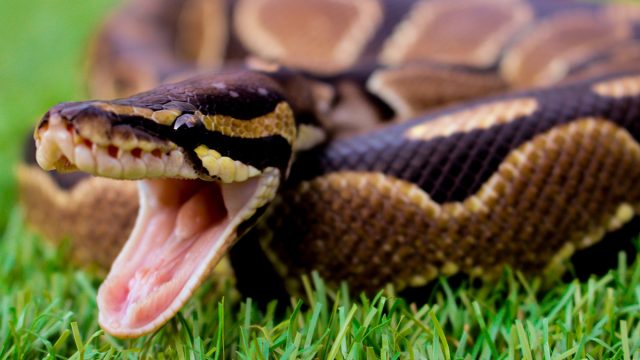
Nature is not always a place of harmony. When a species travels from one area to another, it can blend right in, or it can become invasive—destroying what’s in its path and posing a threat to native animals, fauna, and even humans. These are 11 of the most infamous invasive species that are threatening American wildlife. Several of them—including an Asian mosquito, and a pretty flower that has a Crayola color named after it—pose an urgent threat this summer, causing experts to crank up the warnings in recent weeks.
1
Spotted Lanternfly
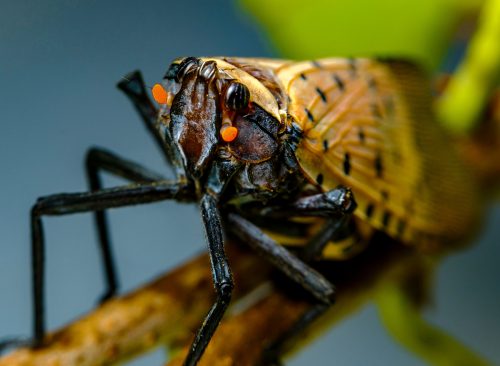
New York is entering its fourth summer at war with the invasive spotted lanternfly, which was first discovered in the state in July 2020. The species, native to China, first arrived on the U.S. East Coast via a shipment of paving stones in 2014, an expert surmises.
It’s a significant threat to a wide range of agricultural crops, including walnut, grapes, hops, apples, blueberries, and stone fruits,” New York City’s official website explains. The red-winged, black-spotted insects deserve no mercy, officials say. “Harming city’s wildlife is prohibited. However, in an effort to slow the spread of this species, if you see a Spotted Lanternfly, you should squish and dispose of it.”
2
Pythons
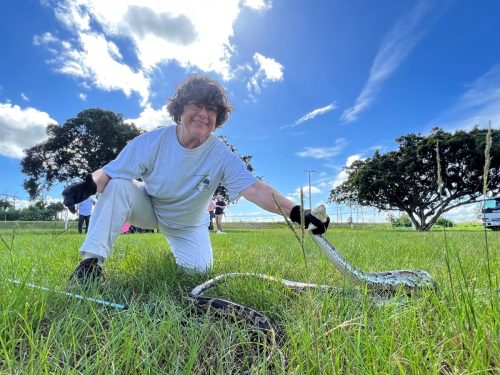
In the Florida Everglades, pythons have basically decimated the ecosystem, experts say. The invasive giant snakes are believed to have been introduced to the area in the 1970s as exotic pets released into the wild. Pythons are known to eat birds, mammals, and reptiles—even alligators and white-tailed deer.
“In the decades since the Asian reptiles have been here, 90 to 95% of fur-bearing mammals in Everglades National Park and surrounding wildlands are gone,” the Fort Myers News-Press reported. The predator is so destructive that state wildlife officials encourage the humane hunting of pythons, even holding an annual statewide festival.
3
Lionfish
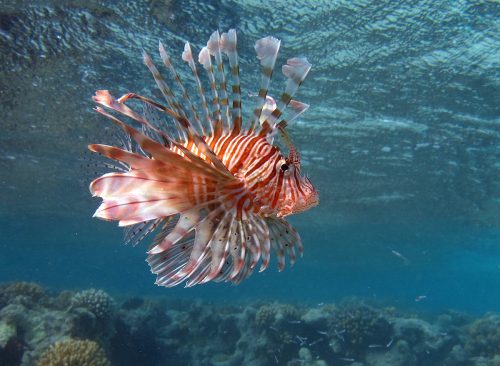
Invasive lionfish are scarfing up so much of the native sea life in the Gulf of Mexico that they’re becoming obese, the NOAA reports. This month, researchers discovered a lionfish caught off the Texas coastline was jam-packed with fish.
“This Lionfish was removed from the sanctuary during the Lionfish Invitational in 2022, and dissected last week,” the sanctuary said in a June 12 Facebook post. “Eleven fish were found in its stomach, and that just represents its last meal before capture.” A single lionfish “can reduce recruitment of native reef fish by 79 percent” in a coral reef, the Gulf States Marine Fisheries Commission says.
4
Sea Lampreys
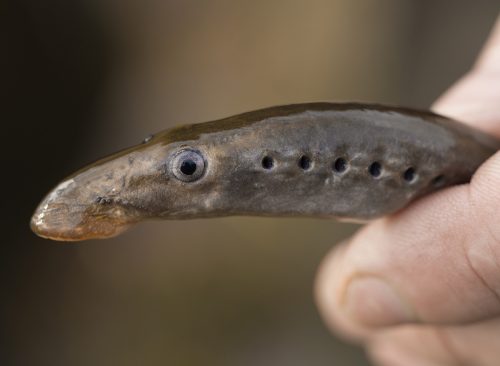
Sea lampreys are an invasive species that are a serious threat to Michigan’s $7 billion fishing industry. They attach themselves to fish and essentially subsist on their blood. An affected fish may die or be weakened—rendered unfit for human consumption in either case.
Lampreys have been a menace in the Great Lakes for a century. Decades of effort have seen their population reduced by 98%, but the fish is so adept at reproducing that “the remaining 2% is enough to start the cycle all over again if left unchecked,” Great Lakes Now reports. It costs $20 million a year to keep their numbers at current levels.
5
Iguanas
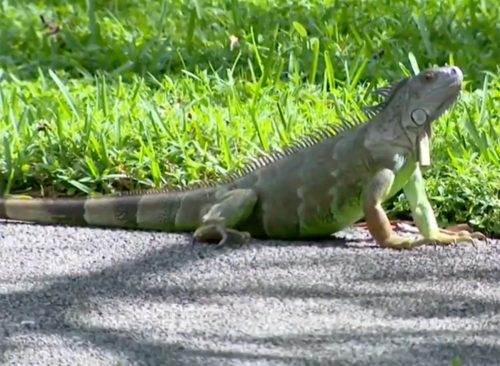
Experts say Florida is experiencing a full-scale iguana invasion, and it’s causing more than an occasional nuisance. “Green iguanas are not native to Florida and are considered an invasive species due to their impacts to native wildlife,” including tree snails and plants that host endangered butterflies, the state wildlife commission says.
They have also impacted humans. The large lizards are causing property damage and even electrical outages by getting into substations and causing short circuits, CBS Miami reported in January. “They’re just popping up every single place where they don’t belong,” said Harold Rondan, a trapper and owner of Iguana Lifestyle. Iguanas are devouring gardens, dipping into pools, and showing up inside toilets. The reptiles are also known to pass salmonella bacteria to pets.
6
Spongy Moth
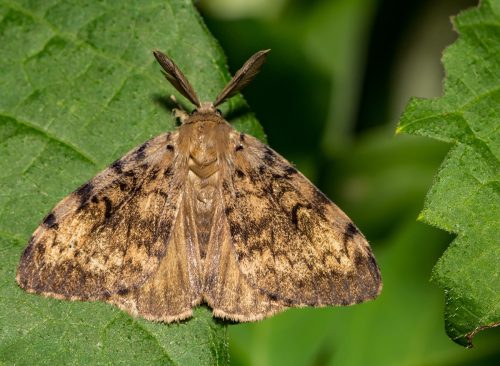
The Ohio Department of Agriculture announced this month that it has begun aerial spraying to reduce an infestation of the spongy moth, a non-native, invasive species that has moved into the state from Pennsylvania and Michigan. Each egg a female lays contains between 500 to 1,000 individual eggs; once hatched, the young moths can feed on the leaves of more than 300 different trees and shrubs.
One 2-inch larva can eat up to one square foot of foliage every 24 hours. In heavily infested areas, the spongy moth can completely strip infested trees.
7
Red Swamp Crayfish
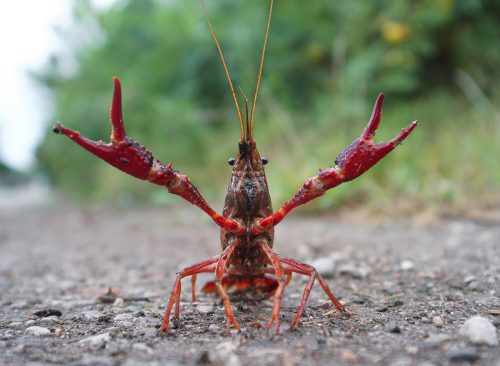
Also known as the Louisiana crayfish, the red swamp crayfish is a popular delicacy in the South but a damaging invasive species in other areas. Like in Michigan, where red swamp crayfish are overtaking native crayfish species in local waterways. The voracious animals can thrive in nearly any water habitat.
“They outcompete (our eight native crayfish species) for food and habitat,” MSU Extension Water Resources Educator Kelsey Bockelman told WOOD-TV this month. “When you get a big nest of them in an area, they like to burrow into our shorelines, and that can cause huge erosion issues.”
8
Feral Hogs
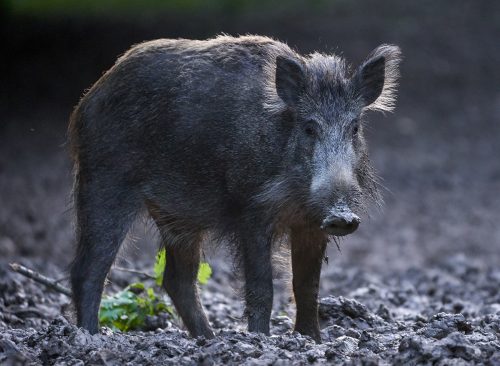
There are 6 million feral hogs in the United States, “the most intractable invasives that most people have never heard of,” said Wired in a March 2023 report. “If you wanted to create the perfect invasive species, one that could pretty much live anywhere, could eat anything, had a very high reproductive rate, was extremely destructive, and was also very difficult to control, you would have to look no further than the wild pig,” said John “Jack” Mayer, a noted authority on feral swine.
“To a wild hog, modern human landscapes—farm fields, flower gardens, golf courses, landfills—are all-you-can-dig-up buffets,” the news outlet said. “Anything that has a calorie in it, they’ll eat it,” said James LaCour, the state wildlife veterinarian in Louisiana’s Department of Wildlife and Fisheries. “They’re a mammalian cockroach.” It’s estimated that they cause $2.5 billion in damage to wildlife each year.
9
Periwinkle

An invasive flower? Yep. This innocent-looking purple flower (a.k.a. vinca major) is a major scourge in California, where it roots deeply and “if left unchecked, it can completely smother small shrubs and any annual or perennial plantings,” reports the Redding Record Searchlight.
“Vinca major is listed as a highly invasive plant in California.” Invasive plants can choke out other species, lower soil quality, and increase fire danger.
10
Asian Tiger Mosquito
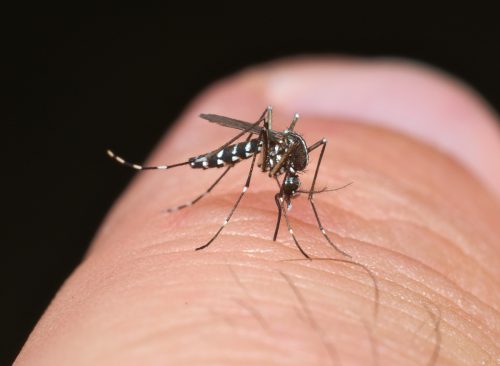
Over the past few weeks, experts from California to Missouri to Rhode Island have urged residents to be on the lookout for the Asian tiger mosquito as it rapidly spreads across the U.S. So named because of its telltale black-and-white striped back, the tiger mosquito is an aggressive biter during the day and can transmit a number of serious diseases, including encephalitis, dengue, yellow fever, and West Nile. It poses a special threat to dogs and horses, spreading heartworm. To protect yourself, experts urge following standard mosquito-prevention tips, including applying mosquito repellent (especially at dusk) and emptying any standing water (where mosquitoes love to breed) around your home.
11
Cats

The lovable household pets are also, yes, considered one of the world’s most destructive invasive species—invasive because they’re believed to have originated in Egypt and spread throughout the world, wreaking havoc on local wildlife populations.
Last year, Polish scientists created a global uproar when they classified cats as an “invasive alien species” and had to publicly explain themselves (it’s because of felines’ Middle East origin). But the scientific evidence of their effect on wildlife is nothing new: In 2013, a paper in Nature Communications estimated “free-ranging domestic cats kill 1.3–4.0 billion birds and 6.3-22.3 billion mammals annually.” The American Bird Conservancy says cats have contributed to the extinction of more than 60 species of birds, mammals, and reptiles. Sorry, kitty. Please don’t hurt us.














